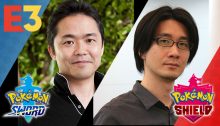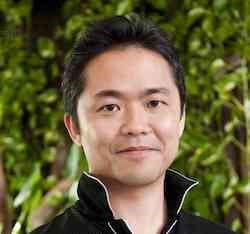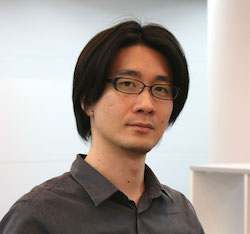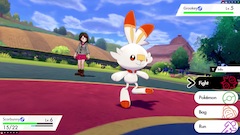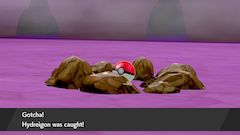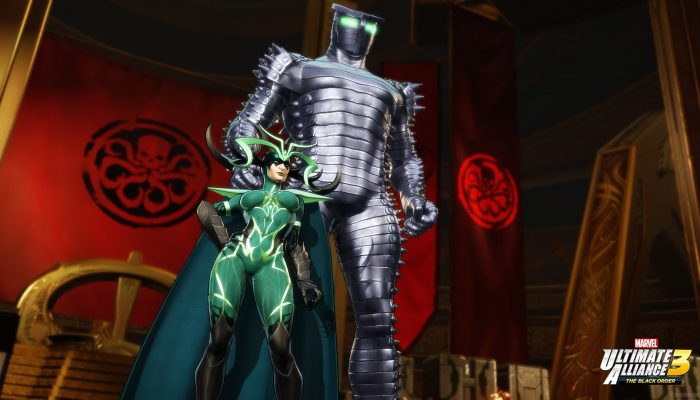 “The Galar region is based on the UK, and it ties back into the theme of ‘strength.'”
“The Galar region is based on the UK, and it ties back into the theme of ‘strength.'”
☆ NintendObs Event – Nintendo E3 2019.
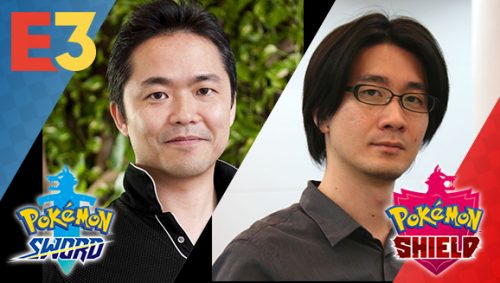
We Interview Junichi Masuda and Shigeru Ohmori about Pokémon Sword and Pokémon Shield
GAME FREAK’s Junichi Masuda and Shigeru Ohmori discuss the finer details about the latest Pokémon RPG adventure.
June 13, 2019
The annual E3 Expo is an exciting time for video game players, and Pokémon fans have even more reason to get hyped, as it’s the first time that Pokémon Sword and Pokémon Shield have been available for the public to play. During E3, we had the opportunity to sit down and chat with two of the creators of these upcoming games from GAME FREAK inc.—Junichi Masuda, the producer of Pokémon Sword and Pokémon Shield, and Shigeru Ohmori, the director of the games. Here’s what they had to say!
Junichi Masuda
Shigeru Ohmori
Designing the Galar Region
Pokemon.com: One of the first things we wanted to ask about is the theme of Pokémon Sword and Pokémon Shield. What do you hope the players get out of their experience in the Galar region?
Shigeru Ohmori: The biggest theme in these games is the idea of being the greatest or the strongest. And we express that through the Nintendo Switch being the most powerful system that Pokémon games have been on before in terms of the graphical capabilities and hardware specifications. Also, the Dynamax feature shows how Pokémon become huge and strong. We really want players to feel the idea of strength come through these games.
Pokemon.com: Tell us about the Galar region. What was the inspiration behind this new region? Why did you feel this would be a good setting for the next big Pokémon adventure?
Ohmori: The Galar region is based on the UK, and it ties back into the theme of “strength.” There are a lot of legends in the UK of giants and whatnot, and we’re trying to convey that in these games as well.
Pokemon.com: Creating an entirely new region sounds like a daunting task. How long does it take to develop a new region? What goes into the planning of these worlds?
Ohmori: It really depends on the game, but development can go on for quite some time. Specifically with Pokémon Sword and Pokémon Shield, we began the conceptual phase immediately after development wrapped up on Pokémon Sun and Pokémon Moon. That concept phase took about a year, and then we moved on to full production. All of that, along with the debug phase, took about three years.
Creating New Pokémon
Pokemon.com: We see you’re holding these large plush versions of Pokémon Sword and Pokémon Shield‘s first partner Pokémon. What is the thought process behind creating new first partner Pokémon? Are they designed as first partners from the start, or do you design multiple new Pokémon and then decide which ones will become the first partners?
Ohmori: The way the Pokémon design process works is different each game, but for the Pokémon Sword and Pokémon Shield process, we first had our planners and concept designers work to come up with the settings for where these three first partner Pokémon will be in the game. They created a text file with the thoughts of what that would be.
They then worked with our artists and designers to come up with the designs that would fit that concept. So from the beginning, Scorbunny, Grookey, and Sobble were designed to be these games’ first partner Pokémon.
Pokemon.com: How do you define the individual character of each Pokémon? The new first partner Pokémon, for example, seem to have pretty defined personalities.
Ohmori: One thing that sets Pokémon apart from other character brands is that we don’t set out to design the Pokémon to be characters themselves. Instead, they’re supposed to be these living creatures that are believable as existing in their own environment. Like Wooloo, for example. You can picture that living on its own in the wild like an animal would.
But it is a little bit different for the first partner Pokémon. We try to infuse them with a fixed personality. For example, Sobble is kind of a crybaby Pokémon, while others might be more active or excitable. In general, they’re designed to be believable, living creatures, but we try to create more fixed personalities for the first partner Pokémon.
Masuda: For the first partner Pokémon in particular, those are the first Pokémon that the player is going to choose, so having them convey a straightforward personality is important. It makes it a lot easier to choose. Maybe people who are sad can choose Sobble. (Laughs.)
Pokemon.com: Now, you mentioned Wooloo, which is a recently revealed Pokémon that seems to have become extremely popular with fans. Are you ever surprised by which Pokémon the public seems to latch on to?
Ohmori: When we were developing the new Pokémon, Wooloo was just another Pokémon that was there in the mix. I always thought it was cute, but it definitely caught me by surprise just how popular it became and how much the fans embraced it!
Developing a New Pokémon Game
Pokemon.com: What did you learn about Nintendo Switch development during Pokémon: Let’s Go, Pikachu! and Pokémon: Let’s Go, Eevee! that you used during development of Pokémon Sword and Pokémon Shield?
Ohmori: Well, Pokémon: Let’s Go, Pikachu! and Pokémon: Let’s Go, Eevee! were our first full Pokémon game projects that we developed on the Nintendo Switch, and it was almost sort of a research project for us to learn how to develop on that system. We did learn a lot that we were able to use. From a programming perspective, we were able to use a very similar code base when we were working on Pokémon Sword and Pokémon Shield.
Without having made those games, we probably wouldn’t have been able to deliver Pokémon Sword and Pokémon Shield at this time. There were different teams working on those different games, but we were able to use a lot of what we learned.
Pokemon.com: What elements do you feel are essential to a core Pokémon RPG?
Masuda: Poké Balls! (Laughs.)
Ohmori: (Laughs.) That’s a little bit broad… Let me think of something! One of the things I always put a lot of focus on is the feeling of growing alongside your Pokémon throughout the adventure. I think that’s pretty core to the series.
Masuda: One of the things about Pokémon in general is that the wild Pokémon start out as— They’re sort of like enemies, but you can catch them, and they become your friends. So, we want to make sure that the Pokémon never come across as too evil. They’re not just bad guys—they can also be your friend. Having that kind of relationship, I think, is key to the series.
Pokemon.com: And then sort of the inverse of that, what traditional elements do you feel can be given a new spin in these core RPGs?
Ohmori: One example is how you encounter wild Pokémon. It was always random encounters, and we did a lot of experimentation on ways we could change that up a bit. Then we tried encountering Pokémon that you see walking around on the field. Then, in Pokémon Sword and Pokémon Shield, we landed on this kind of hybrid system.
Masuda: A lot can change. Every new game, we’re thinking of the era in which the games are going to be released and who the target audience is. So depending on that and who we’re trying to make these games appealing for, things can change every time.
Ohmori: It can be even something as small as being able to use the Right Stick to freely move the camera in the Wild Area. That was something that hasn’t been in a Pokémon game before. There was a lot of debate internally about if we should let people control the camera. We tried it out and decided that it was something that we wanted to include in the game.
That’s an example of meeting the needs of the time. It’s just become so normal now for games to allow you to control the camera. Players are used to that, so we felt it would work well here.
Pokemon.com: Does GAME FREAK consider Pokémon Sword and Pokémon Shield to be more of a portable experience or more of a console game that you would play on a TV?
Masuda: It’s kind of hard to say. We really view it as both. For example, the Dynamax Pokémon look a lot more impressive on a big-screen TV, so maybe doing Max Raid Battles is something you would want to experience on a TV. But at the same time, you can take it anywhere you go and enjoy your adventure anywhere. It really comes down to the player’s play style.
Dynamax Pokémon and Max Raid Battles
Pokemon.com: Speaking of Dynamax Pokémon, what was the inspiration behind this new feature?
Ohmori: One of the big reasons for us wanting to implement Dynamax Pokémon was that the Nintendo Switch has a high resolution, and you can play it on big TVs, and we could better express the difference in size between Pokémon. Before, on the smaller-screen, handheld-only systems, there just weren’t enough pixels to really convey that well in a lot of situations. It was something that we wanted to challenge ourselves to do this time.
Pokemon.com: How do you feel Dynamaxing differs from Mega Evolution or Z-Moves?
Ohmori: We wanted to try a new take on that “power up” gameplay that we had with Mega Evolution and Z-Moves. We kind of combined the two of those in a way with Dynamax—your Pokémon are powering up and growing much stronger, but also their moves change to be much stronger, as well. Of course, we also wanted to make it more strategic with the players choosing exactly when to use Dynamax, which is why we limited the power to just three turns.
Pokemon.com: When introducing a new element to Pokémon battles such as Dynamaxing, how do you maintain a balance to keep the battles interesting?
Ohmori: That’s a tough question, but one of the goals that we tried to set out with was making it so that any Pokémon could be viable in battle. Virtually all the Pokémon can Dynamax in the game. Even Pokémon that may not have had a chance to be in the spotlight until now will have a chance to use that ability. That was one of the main things we considered from a balance perspective.
Pokemon.com: Will you be able to use Dynamax Pokémon in player vs. player battles?
Ohmori: Yes, you will.
Pokemon.com: What was the inspiration behind Max Raid Battles?
Ohmori: We started out with the idea of having these giant Pokémon with the Dynamax feature. And then when we saw them in action in the game, we thought that it would be a lot of fun if you could team up with friends to take on these giant Pokémon like a big, challenging boss.
The Nintendo Switch gives us a lot in terms of performance, so we were able to have four players and their Pokémon and this huge Pokémon all on the screen at once. We played around with it, and it seemed like a cool feature.
Another one of the goals for it was to give the opportunity for players to engage in multiplayer battles who like battling but might be too intimidated to get into player vs. player battles. So having this option where anyone can invite their friends to come join them in a cool cooperative battle is something we wanted to do.
Pokemon.com: So, can Max Raid Battles be completed by yourself, or are they designed solely for multiplayer?
Ohmori: Even if you don’t have anyone else to play with, you can challenge a Max Raid Battle on your own. If you do this, the other player slots, which would normally be filled by human players, will be filled with support Trainers. These are computer-controlled NPC players who will come help you out.
Exploring the Wild Area
Pokemon.com: Tell us about the Wild Area. How does it differ from the traditional routes in previous Pokémon RPGs?
Ohmori: Our thinking behind the Wild Area and how it’s different from the typical routes is that we wanted to create a place where it would be interesting to come back every day and see what has changed—something that would feel different each time you play. We needed a really wide-open space where you would be able to do that.
We also wanted to have some place that would support other players that you could play with—a big place that provides a sense of adventure where you can encounter other people, a place that has a sense of discovery.
Pokemon.com: Tying into the Wild Area, we wanted to get your thoughts on the evolution of wild Pokémon encounters throughout the series. Of course, we used to randomly encounter Pokémon in tall grass, and eventually there would be an exclamation point and a wild Pokémon would charge you. And you can now sometimes see the Pokémon wandering around on the screen. What place do each of these methods of encountering wild Pokémon have in the world of Pokémon?
Ohmori: These different methods represent two different ways of playing, really. With the Pokémon roaming around the field, you can see the Pokémon all behaving a bit differently. It feels like a lively environment with all the Pokémon around you, and you can see which Pokémon are out there. You can choose if you want to go catch them. You have a goal in mind when you go to encounter that Pokémon—you want to catch that specific one.
But at the same time, I think there’s a lot of enjoyment to be had in not knowing what you’re going to get. It’s kind of a different thought process when you’re engaging with both systems. I wanted to have both in Pokémon Sword and Pokémon Shield to preserve the discovery of going into a random encounter.
The Music of the Galar Region
Pokemon.com: Who is composing the music for Pokémon Sword and Pokémon Shield?
Ohmori: The primary composers are Mr. Go Ichinose and Ms. Minako Adachi.
Pokemon.com: How do the music themes in the game reflect the Galar region setting?
Ohmori: There are definitely a lot of things we challenged ourselves to do with the music this time around. Although I didn’t compose any of the music, I was very involved with the direction of the music and what I wanted to convey with it. With the UK being the inspiration for the Galar region, I was inspired by my enjoyment of UK rock music, so I wanted to bring a sense of that to the soundtrack.
Also, with the Wild Area specifically, most of the typical Pokémon route music has been fairly short tunes that are about a minute or so that would loop. But since you’re going to be in the Wild Area for such long amounts of time, I wanted to have longer songs filled with ups and downs. So there’s some of that in the game.
Many thanks to both Mr. Masuda and Mr. Ohmori for taking the time to give us a deeper look into the creation of Pokémon Sword and Pokémon Shield. For more information about these upcoming games, be sure to check out the official site. And please look forward to playing the games yourself when they’re released on November 15, 2019!
— Pokémon News
Source: Pokémon.
At NintendObserver, the comments are on Discord.
Click on Community to learn more. 🙂
…
And if you’ve already got yours, click on Pokémon Sword & Shield for everything you need to know about the games. 😀
